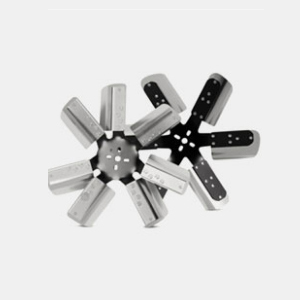-
 Afrikaans
Afrikaans -
 Albanian
Albanian -
 Amharic
Amharic -
 Arabic
Arabic -
 Armenian
Armenian -
 Azerbaijani
Azerbaijani -
 Basque
Basque -
 Belarusian
Belarusian -
 Bengali
Bengali -
 Bosnian
Bosnian -
 Bulgarian
Bulgarian -
 Catalan
Catalan -
 Cebuano
Cebuano -
 China
China -
 Corsican
Corsican -
 Croatian
Croatian -
 Czech
Czech -
 Danish
Danish -
 Dutch
Dutch -
 English
English -
 Esperanto
Esperanto -
 Estonian
Estonian -
 Finnish
Finnish -
 French
French -
 Frisian
Frisian -
 Galician
Galician -
 Georgian
Georgian -
 German
German -
 Greek
Greek -
 Gujarati
Gujarati -
 Haitian Creole
Haitian Creole -
 hausa
hausa -
 hawaiian
hawaiian -
 Hebrew
Hebrew -
 Hindi
Hindi -
 Miao
Miao -
 Hungarian
Hungarian -
 Icelandic
Icelandic -
 igbo
igbo -
 Indonesian
Indonesian -
 irish
irish -
 Italian
Italian -
 Japanese
Japanese -
 Javanese
Javanese -
 Kannada
Kannada -
 kazakh
kazakh -
 Khmer
Khmer -
 Rwandese
Rwandese -
 Korean
Korean -
 Kurdish
Kurdish -
 Kyrgyz
Kyrgyz -
 Lao
Lao -
 Latin
Latin -
 Latvian
Latvian -
 Lithuanian
Lithuanian -
 Luxembourgish
Luxembourgish -
 Macedonian
Macedonian -
 Malgashi
Malgashi -
 Malay
Malay -
 Malayalam
Malayalam -
 Maltese
Maltese -
 Maori
Maori -
 Marathi
Marathi -
 Mongolian
Mongolian -
 Myanmar
Myanmar -
 Nepali
Nepali -
 Norwegian
Norwegian -
 Norwegian
Norwegian -
 Occitan
Occitan -
 Pashto
Pashto -
 Persian
Persian -
 Polish
Polish -
 Portuguese
Portuguese -
 Punjabi
Punjabi -
 Romanian
Romanian -
 Russian
Russian -
 Samoan
Samoan -
 Scottish Gaelic
Scottish Gaelic -
 Serbian
Serbian -
 Sesotho
Sesotho -
 Shona
Shona -
 Sindhi
Sindhi -
 Sinhala
Sinhala -
 Slovak
Slovak -
 Slovenian
Slovenian -
 Somali
Somali -
 Spanish
Spanish -
 Sundanese
Sundanese -
 Swahili
Swahili -
 Swedish
Swedish -
 Tagalog
Tagalog -
 Tajik
Tajik -
 Tamil
Tamil -
 Tatar
Tatar -
 Telugu
Telugu -
 Thai
Thai -
 Turkish
Turkish -
 Turkmen
Turkmen -
 Ukrainian
Ukrainian -
 Urdu
Urdu -
 Uighur
Uighur -
 Uzbek
Uzbek -
 Vietnamese
Vietnamese -
 Welsh
Welsh -
 Bantu
Bantu -
 Yiddish
Yiddish -
 Yoruba
Yoruba -
 Zulu
Zulu
Innovative Applications and Benefits of Welded Wire Fabric in Construction and Design
The Role of Welded Wire Fabric in Construction and Architecture
Welded wire fabric (WWF) has emerged as a staple material in the construction and architectural industries. Renowned for its versatility and strength, WWF plays a critical role in reinforcing concrete structures, paving the way for innovative building designs and improved structural integrity.
What is Welded Wire Fabric?
Welded wire fabric consists of a grid of steel wires that are joined together by electric resistance welding at their intersections. This process creates a robust mesh that can be produced in various sizes and gauges, allowing it to cater to a wide range of construction needs. The material is available in rolls or sheets, making it convenient for transport and installation. Its high tensile strength and durability make it an ideal choice for reinforcing concrete slabs, walls, and various other structural components.
Advantages of Using Welded Wire Fabric
1. Enhanced Structural Strength One of the most significant benefits of WWF is its ability to improve the tensile strength of concrete. When incorporated into concrete, it helps distribute stresses evenly, minimizing the risk of cracking and ensuring the longevity of the structure.
2. Cost-Effectiveness Using welded wire fabric can be more economical compared to traditional rebar reinforcement. WWF requires fewer materials and less labor time for installation, which can lead to significant cost savings in large-scale construction projects.
3. Easy Installation The pre-made nature of WWF allows for straightforward installation, reducing time on-site and minimizing construction delays. Crews can quickly unroll and position the mesh, facilitating faster project completion.
welded wire fabric

4. Versatility Welded wire fabric can be adapted for various applications, including flooring, walls, pavements, and even precast concrete elements. Its flexibility in design makes it suitable for diverse aesthetic and structural requirements.
5. Resistance to Corrosion When properly treated, WWF exhibits excellent resistance to corrosion, which is particularly important in harsh environments where structures may be exposed to weather extremes, chemicals, or moisture.
Applications of Welded Wire Fabric
Welded wire fabric finds applications in numerous areas within the construction industry
- Foundations WWF is commonly used in slab foundations to enhance load-bearing capacity, allowing for more extensive and heavier structures. - Pavements Its application in road construction provides better durability and reduces the likelihood of cracking in asphalt and concrete pavements. - Walls and Retaining Structures In walls and retaining systems, WWF reinforces panels, providing extra strength and stability. - Precast Elements The use of WWF in precast concrete permite faster production and improved control over quality and performance. - Residential Construction Homebuilders frequently use welded wire fabric in driveways, patios, and pool decks, ensuring a long-lasting finish.
Conclusion
The importance of welded wire fabric in modern construction cannot be overstated. Its combination of strength, ease of use, and cost efficiency has made it a preferred choice among engineers and architects. As the industry continues to adopt new technologies and materials, WWF remains a reliable and essential component in the construction sector, enhancing the safety and longevity of buildings while supporting innovative design solutions. As we move towards ever more ambitious architectural feats, welded wire fabric is set to play a pivotal role in shaping the structures of the future.
-
Why Nylon Mesh Netting is Revolutionizing Industrial and Commercial ApplicationsNewsJun.13,2025
-
Reinventing Reliability with Construction Wire MeshNewsJun.13,2025
-
Protect Your Crops with High-Performance Agricultural Netting SolutionsNewsJun.13,2025
-
Premium Breeding Net Solutions for Modern AquariumsNewsJun.13,2025
-
Precision Filtration Solutions for Industrial and Commercial NeedsNewsJun.13,2025
-
Advanced Industrial Mesh Solutions for Every ApplicationNewsJun.13,2025











